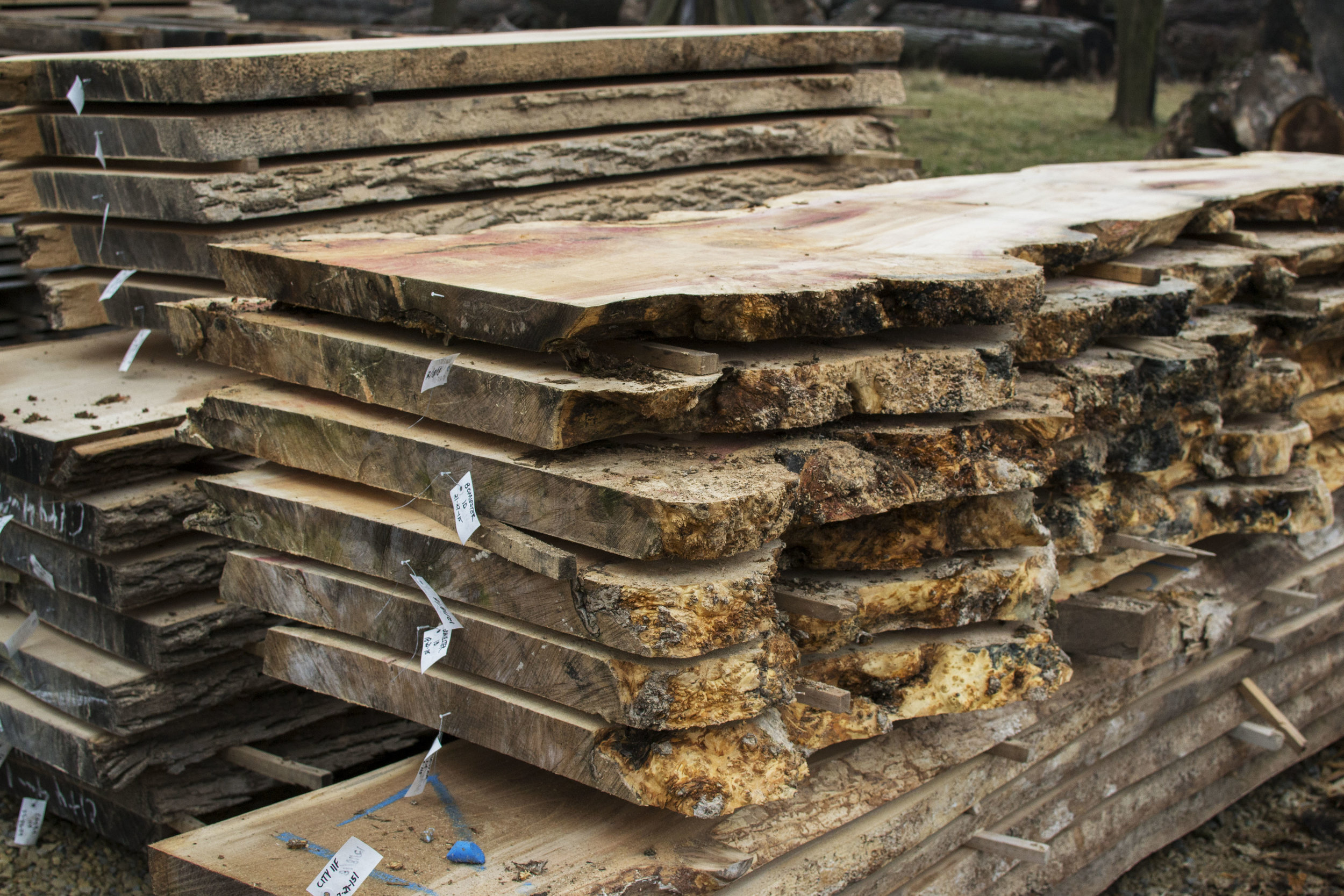Buying Live Edge | How Long Does it Take to Produce a Quality Live Edge Slab
How Long Does it Take to Produce a Quality Live Edge Slab?
When you’ve found a reputable source for buying slabs (after asking them the five key questions in my last post), you should be armed with answers that tell you drying slabs properly takes time.
the simple timeline
For the purpose of this timeline let’s assume we have a 2.25” thick slab which is a very common slab thickness for most homeowner applications.
3-6 months of air-drying (12 months can sometimes be better still)
3 months in a kiln
While these numbers reflect the actual time for drying it all depends on the backlog of your producer whether this timeline is probable. For example, slabs cut on our mill often are in the process of drying for 2-3 years because of the quantity of slabs being cut on a yearly basis and our client priorities and kiln backlog at any given time.
the science behind the timeline
For the scientists and engineers in the audience, drying rate is a squared function of wood thickness. In other words, if you double the thickness of a board, your theoretical drying time is four times longer. This can be adjusted or “cheated” to some degree, but cheating too far cheats the user of the wood, and that user may not know or see the consequences until they are working the wood, or even worse, after their work is completed.
And then let’s add more thickness, since the wider the slab the more it will move during drying, so to assure you get a finished slab that is usable, you may need to cut 2 ¼ to 3” or more. So in drying terms, 3 squared or 9 times the dry time of an inch board (again in theory)
So let’s say a smaller wood producer owns one of the more common kiln types, a dehumidification kiln. A common sized unit is designed to dry around 2500 board foot of lumber in a batch of inch thick boards. For this one inch lumber, green-to-dry kiln time is typically 5-6 weeks, or 35-45 days. So based on the prior paragraph a theoretical drying time for 2 inch thick wood should be closer to 140-180 days, or close to half a year. Both research and the experience of many operators will tell you this can be pushed closer to perhaps 90-100 days as a practical minimum for most species. And the 3” slab? Let’s just say the world experts in wood drying don’t even address this for oak, on the assumption that (with the exception of live edge artisans) no one in their right mind would take the time needed.
Either way, this is a long time to have kiln running while using $300 or more in electricity per month for a dehumidification kiln. So the goal would be to fill that batch as full as possible, but doing so while still limiting themselves to equal thicknesses and to woods with similar drying characteristics, such as walnut and cherry, but not walnut and oak. I can assure you that very few operators produce and dry live edge slabs in batches large enough to justify this commitment. So the alternative is to cheat again and dry other lumber concurrent with these thick live edge pieces. What suffers most if this is tried? The thick pieces do.
So the next option is air drying before kiln drying. Going this route now adds a new complexity. Where can I store a year’s worth of large live edge slabs under cover, but where the wood still gets some air movement, so I can start a slow air drying process before putting it in a kiln? And secondly, can I afford to carry that much inventory and not see a return on my investment for that long? This points you to those that are in this for the long haul, and depending on how long, they are more likely to have the inventory to supply what you need.
There is one quicker option worthy of note; vacuum kilns. There are few but growing numbers of these kilns in use, but the concept is simply “boiling” the water out of the wood at a low enough temperature that the wood character is unchanged through use of a vacuum chamber. Most commercial lumber is dried at high temperatures in part for insect control, but mostly because the closer one gets to boiling, the faster moisture can move. These high temperature kilns just cant reach atmospheric boiling temperature without risking wood damage, but a vacuum lowers the boiling point enough to be safe for the wood. My limited early exposure is that doing this from green can lead to highly variable moisture levels in differing parts of highly figured woods, but not much published research is available to date. Again, the engineer in me tells me that air drying seems to be a first best step even with vacuum kilns. I also am unsure whether the vacuum conditions address insect issues.



